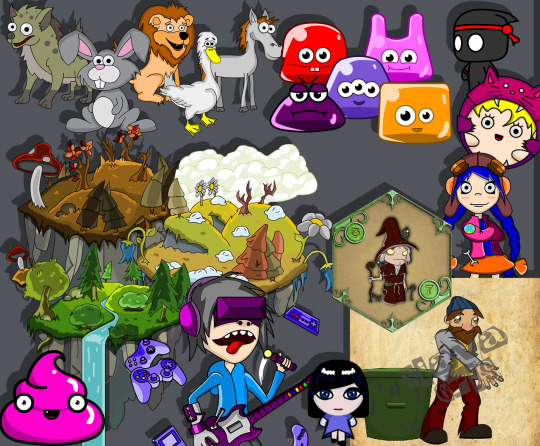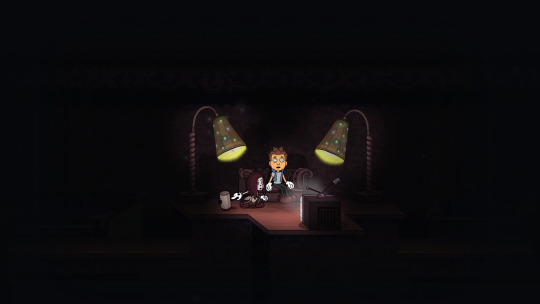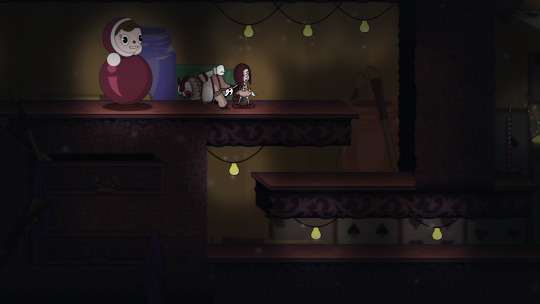#Why Convert Flash Courses to HTML5
Explore tagged Tumblr posts
Text
Traditionally, many developers used Flash when they were creating, but now that HTML5 is around that is changing. Flash has always been a pretty labour intensive product and one that is not always compatible with certain devices or platforms. This creates problems for developers if they want to reach as wide an audience as possible. If you develop an app that is not compatible across the board then obviously some people are going to miss out. Using HTML5 means that this does not happen. Developers can create apps that everyone can access and use. What Is HTML5? Below is a amazing video tutorial on Youtube for HTML5. Why Is Reaching Everyone So Important? Developing an app takes time and developers want to see a decent return on this investment, as well as any financial investment. The best way to maximise this return is to reach as many people as possible. One of the most important aspects of this is to reach mobile device users. People spend as much as two hours each day going online on a mobile device; so you can see how important it is to make the most of this opportunity. HTML5 works across all devices so developers do not have to worry about missing out on a significant potential audience. In fact, it’s thought that many native apps will eventually just act as a portal into an HTML5 web passed app, with users not being aware of any difference. How can HTML5 be used? One of the biggest uses of HTML is creating apps for management of, and communication by, social media. Of course, social media is a pretty big deal for any business. It’s one of the best ways to reach a current or potential audience. That is why this aspect of using HTML5 is so important. HTML5 is also useful when it comes to creating online communications. You can learn more about flipbook pdf on nmhytg.com. This tells you about how to use software to convert a basic pdf into a glossy and impressive flipbook. If you are looking at creating online brochures and magazines this is a very useful tool. Visitors to your website can access the flipbook and just click or swipe to access page after page of useful and relevant information. The action of reading a flipbook may be based on the traditional practice of reading a hard copy book or magazine but the process is very much updated for the digital age. If you are creating flipbooks online you can include video and audio content which makes for a more well-rounded reading experience. As you can see, HTML5 is helping to transform the way developers create apps for the web. It’s a less labour intensive process than using Flash to do a similar job. These apps can be viewed across platforms and devices which means that more people get to use them. If you run a business this is a huge consideration if you want to maximise the potential customer base for your product or service.
0 notes
Text
Custom eLearning Solutions for Effective Learning and Development

Custom eLearning solutions design interactive, engaging courses tailored to meet your specific training needs at competitive prices.
Our eLearning Solutions:
Rapid eLearning
Blended Learning
Legacy Content Conversion
Translation & Localization
Learning Management System (LMS)
Human Resource Management System (HRMS)
What is Custom eLearning?
Custom eLearning provides personalized online courses that cater to the unique needs of learners and organizations. Our goal is to enhance training effectiveness and maximize return on investment (ROI).
The transition from ILT/VILT to eLearning: Convert classroom-based training into SCORM and HTML5 content for interactive, accessible learning.
Microlearning Solutions: Bite-sized modules designed for on-the-go learning to improve quick knowledge retention.
Game-Based Learning Solutions: Engage learners through interactive, game-based learning strategies for effective knowledge transfer.
eLearning Content Development
We offer tailored learning experiences designed to meet specific objectives and learner needs.
Rapid eLearning: Quick, efficient course development using rapid authoring tools.
Blended Learning: Seamlessly integrates in-person and online learning for a balanced training approach.
Custom eLearning Samples
Explore our diverse range of custom eLearning solutions that enhance employee skills through interactive modules and simulations.
Content Conversion Solutions
Legacy Content Conversion: Modernize outdated materials into digital formats.
Flash to HTML5: Upgrade Flash-based courses for compatibility with modern standards.
PPT to eLearning: Turn PowerPoint presentations into engaging eLearning content.
ILT to eLearning Conversion: Transform traditional training materials into dynamic eLearning courses.
Translation & Localization Solutions
Our translation services convert eLearning content into various languages, while localization adapts it to fit specific cultural contexts.
eLearning Translation Services: Convert text, images, audio, and video for multilingual learners.
Multimedia Localization: Adapt multimedia elements like graphics, animations, and more for different audiences.
Our Approach
Storyboarding: Visualizing the course structure for better clarity.
Multimedia-Rich Content: Enhance engagement with videos, animations, and infographics.
Personalization: Tailored learning experiences to match individual needs.
Scenario-Based & Gamified Learning: Real-life challenges and gamification drive deeper understanding and motivation.
Compliances and Standards
We ensure compatibility with eLearning standards such as SCORM, xAPI, and HTML5, as well as mobile responsiveness across devices. We also utilize cutting-edge technologies like AI, VR, and AR to enhance learner engagement.
Custom vs. Off-the-Shelf eLearning
Custom eLearning: Tailored to your specific organizational needs, goals, and brand identity.
Off-the-Shelf Courses: Standardized solutions for quick deployment and cost-efficiency.
Elevate Your Training
We specialize in training for:
Onboarding
Safety & Compliance
Sales & Product Knowledge
Leadership & Soft Skills
Industries We Serve
Our eLearning solutions cater to diverse industries, including corporate organizations, educational institutions, healthcare, and government.
eLearning Authoring Tools
We use industry-leading tools like Articulate Storyline, Adobe Captivate, and Camtasia to deliver high-quality, custom eLearning content.
What Our Clients Say
“Swift provided excellent support in developing our online course. Delivered on time and within budget, the course is now widely used and highly effective.”— Mark Cozens, Principal Veterinary Officer
Please send us your requirements at:[email protected]://www.swiftelearningservices.com/contact-us/
FAQs
Why choose custom eLearning?
Custom eLearning offers flexibility, and enhanced engagement, and aligns closely with your goals.
What does it cost?
Costs typically range from $2000 to $8000, depending on the complexity and customization required.
How long does it take?
Custom eLearning content development generally takes 3 to 5 weeks per hour of content.
Can you customize eLearning content to reflect our brand?
Yes, we tailor all content to align with your company’s branding and values for a consistent learning experience.
#custom eLearning solutions#customs eLearning#custom eLearning development#eLearning development#custom eLearning content#bespoke eLearning#custom eLearning services#custom eLearning content development#custom eLearning design#customized eLearning#eLearning solutions
1 note
·
View note
Text
Things to consider before you hire the Flash to HTML5 conversion service
What is Flash?
Flash or Adobe Flash is a belittled multimedia programming platform that is utilized to deliver great rich web applications, animations, portable applications, work area applications, mobile games, and video players that are inserted on internet browsers. Streak can show vector realistic, text and raster designs to give activities, applications and computer games.
What is HTML5?
HTML5 is the latest development of the old standard that characterizes HTML. HTML5 is the most recent form of the HTML language alongside new attributes, components, practices, and a bigger arrangement of advances that makes it conceivable to grow more well known and assorted sites and web applications.
Why do we need to convert content from Flash to HTML5?
Flash is almost dying in a horrible manner. Most corporate associations that keep their Learning and Development (L&D) office refreshed with new and forthcoming patterns have effectively changed over the entirety of their inheritance eLearning courses from Flash to HTML5. While Flash isn't exactly dead, its time is practically finished. Adobe ceased Flash and once again introduced itself as Adobe Animate, however people have effectively made up their minds.
HTML5 likewise offers various advantages, including the way that it upholds all programs locally, while extra modules should be introduced for Flash. Furthermore, Flash requires a higher handling power as compared to HTML5. Thirdly, HTML5 is openly accessible, while Flash requires a devoted advancement environment and must be purchased. HTML5 is additionally SEO-friendly, while Flash isn't. It is clear, subsequent to perusing the previously mentioned focuses, that a corporate association with a L&D program needs to change over from Flash to HTML5 as quickly as time permits. Be that as it may, at that point comes the unavoidable issue: Should you change over it yourself in-house or would it be advisable for you to move to a merchant? How about we view the subtleties of the two of them.
In the event that you are considering changing over from Flash to HTML5 in-house, you need to have a committed proficient group. You may likewise need to enlist extra assets for the privilege ranges of abilities. Nonetheless, getting things done in-house has its own benefits, like better communication and a smoothed out measure. In the event that you are considering re-appropriating Flash to HTML5 conversion services, you ought to have a certified group that can deal with a high volume of changes. Nonetheless, the test lies in overseeing successful correspondence.
Advantages of Flash to HTML5 conversion
Since Flash will end soon, it is time currently to change over the entirety of your Flash content to HTML5. Know certain advantages, in the event that you are intending to change SWF in HTML5.
● By changing over them into HTML5, you can make all your content viable according to most recent guidelines.
● The best part about this progress is that you can decide to hold all your content even the ones that are without their source documents.
● You get the adaptability of supplanting old glimmer based intuitive content with the modern ones.
● By changing over SWF in HTML5, you can improve the scope of your content by empowering interpretations.
Most associations outsource Flash to HTML5 conversion to another organization since it saves them the headache of recruiting an in-house team. Most flash to HTML5 conversion services likewise charge route not exactly the sum you'll need to spend building an in-house group and changing over the entirety of your courses. On the off chance that you do choose to re-appropriate Flash to HTML5 transformation to an eLearning merchant, there are sure things you should remember at the same time. We should view these.
1. Ensure the Flash to HTML5 Conversion Organization You Outsource Consists Of Experienced Professionals
Changing courses from Flash over to HTML5 isn't simple. It is an arduous cycle that requires a ton of time and a specific degree of mastery. It is suggested that you evaluate the skill of your eLearning merchant, so as not to harm the uprightness of the courses prior to giving them over for the transformation interaction. A few different ways to survey the ability of flash to HTML5 conversion service providers are to view their previous record of ventures effectively conveyed, examine reviews just as tributes, see case studies on their site, and ask them for the cycle they'll use for the transformation just as the layouts they'll use to facilitate the interaction and save time.
2. Ensure They Use Rapid eLearning Tools
Ask your eLearning merchant for a course of events. They ought to have the option to furnish you with the finished undertaking inside a sensible course of events. Ensure they utilize quick eLearning writing devices, which will make the conversion process quicker. As the eLearning content is now present in Flash arrangement, changing it over to HTML5 design shouldn't set aside much effort for a seller that is utilizing fast eLearning writing devices, regardless of whether a portion of the source records or media segments are absent.
3. Ensure The Blueprint Or Plan Of The Conversion Process Is Proper
As referenced previously, request the merchant for a legitimate outline or plan from the change interaction. Ensure that the improvement is plainly laid, and that they keep you associated with every one of the various periods of the entire transformation measure. Ask them what composing apparatuses they'll use for separating content and media from the learning material accessible, and that simply the best layouts will be utilized to create models and inserted interactivities. Additionally, ensure that they counsel you prior to settling on any significant choices.
Continuously search for an eLearning business that can offer you extra or extra service. Employing proficient eLearning merchants who have long stretches of involvement can at times even iron out any imperfections your courses may have, subsequent to talking with you obviously. Make your prerequisites clear prior to choosing them, and consistently examine the extent of your venture already. The more data you give them, the almost certain it is for you to get an impeccable transformation.
2 notes
·
View notes
Link
#Why Move eLearning from Flash to HTML5#Why Migration Of Your Online Training Courses From Flash To HTML5#why convert flash to html5 why flash to html5#Tips For Successful Flash To HTML5 Migration#Why Convert Flash Courses to HTML5#moving from flash to html5#Flash to HTML5#flash to html5 conversion#convert flash to html 5#Flash to HTML5 migration#html5 elearning examples#convert flash elearning to html5
0 notes
Link
Organizations have made huge investments in Flash-based legacy courses. Until a few years ago, Flash was a prominent authoring tool; thanks to its ability to create an extensive range of animations and interactivities. However, with the end of Flash by 2020, organizations have realized that it is imperative to convert their Flash-based courses to HTML5. Since the present generation is inclined towards mobile learning and perform most of the activities on their mobile devices, it has become necessary to re-purpose the legacy courses such that they become compatible with mobile devices.
Converting legacy courses to HTML5 necessitates the selection of an appropriate authoring tool. There are various authoring tools such as Articulate Storyline, Adobe Captivate, Lectora, Elucidat, etc., which make the Flash to HTML5 conversion process possible.
Articulate Storyline is one of the powerful standalone authoring tools which helps in creating engaging interactive courses. Articulate Storyline delivers cross-platform and cross-format content including HTML5, Flash, and loads of other up-to-date technologies. Storyline comprises features such as screen-casting, triggers, and slide layers which facilitate the user in designing different types of interactions with ease. Here is a list of features that make Articulate Storyline undoubtedly one of the best when it comes to Flash to HTML5 conversion.
#elearning translations#articulate storyline#convert legacy courses into html5#convert flash to html5#flash to html5 conversion#authoring tool#html5#flash#flash-based courses#end of flash by 2020#mobile learning#engaging elearning#html5 learning content#articulate storyline templates#interactivities#motion path animation#authoring tools#elearning#responsive learning
1 note
·
View note
Text
What's gonna happen if a psychologist would make a video game?
I was interested in psychology even at school, and not for typical reasons: I was not motivated by the desire to deal with my own “demons” or to understand people around me. At the age of 17, I went to programmers university preparatory courses. There I was surrounded by guys in knitted sweaters and with virgin moustaches on thoughtful faces. The next day I was brought to courses in a pedagogical university, where I was the only guy in the audience. Young girls all around me, and the audience full of fragrant scents of women's perfumes. Stunned by what I saw, I confidently decided to study in this paradise.That’s how I began to break my life.The answer is psychedelic metroidvania where you play as a phobia.

Hello everybody, my name is Slava, I’m from Russia, and I am preparing the release of the third game that I made almost alone: music is the only piece I’m not responsible for. I make everything else myself. Having only a master’s degree in psychology, I dived into game development five years ago. I think it’s worth explaining a little about how it happened to bring a better understanding of what is going on in here. A small introduction will help to adequately perceive everything that jumps and flashes in the recently published trailer:
youtube
I was interested in psychology even at school, and not for typical reasons: I was not motivated by the desire to deal with my own “demons” or to understand people around me. At the age of 17, I went to programmers university preparatory courses. There I was surrounded by guys in knitted sweaters and with virgin moustaches on thoughtful faces. The next day I was brought to courses in a pedagogical university, where I was the only guy in the audience. Young girls all around me, and the audience full of fragrant scents of women's perfumes. Stunned by what I saw, I confidently decided to study in this paradise.
That’s how I began to break my life.

In my “career” of a psychologist, the most reasonable decisions were: to drop dropping the psychology to hell; silently leaving graduate school; retirement from a kind of a foster home, where I worked for three years after graduating from the magistracy and fully devoting myself to game development.
I made these decisions not because I wasn’t interested in psychology anymore - on the contrary, while I was studying, I began to penetrate the structure of human minds. However, this profession did not allow me to express myself creatively. I always wanted other people to enjoy the worlds that were born in my mind. Knowledge of psychology helped in building my own life and in creating fictional characters, but it’s difficult to call it a high-paying profession in Russia. It would be possible to strive to open my office, but my heart wasn’t in it, and I’ve chosen another way.

Job in a social institution forced to constantly look for a part-time work. Although I enjoyed spending time with children from difficult families, moving from my parents and meeting with my “second half” forced me to earn a little more than I used to. The payments in social institutions in Russia are very-very low. I couldn’t do anything except digging in people’s minds with a bottle of whiskey, but I was familiar with Photoshop. I knew how to draw using Macromedia Flash, so I decided to find ways to apply these skills.
And I found it. People often look for artists on the game development forums, and those who had a severely limited budget doesn’t need particularly luxurious graphics - I could easily draw a pair of sprites for 5 euros. My desire to get at least some money helped me to improve my drawing skills. I really didn’t know how to draw. I simply drew and redrew everything until it satisfied the “customer”.

That’s what I used to draw back then.
A year later, I realised that I could completely create graphics for my own game. I only needed to find money for a programmer. The whole thing was in the distant 2014th year, and nobody was aware of the coming “indie apocalypse”. The games were coming out at a crazy oace, and the tools for creating them became easier and more accessible. I saw that artists are no less in demand than programmers, and came to the conclusion that if I had improved my drawing skills to a level allowed me to create a whole game in two years, then how long would it take me to learn to code too?

It took no time at all. I installed Construct 2 and things rushed. Two years later, my first game came out: Reflection of Mine. It was a dark and hardcore puzzle about a girl with multiple personality syndrome. I chose this topic because I wanted to use all my knowledge and skills in this project, and by that time I was the most advanced in psychology. And the engine...
Almost nobody takes Construct 2 seriously. This is an engine for creating two-dimensional HTML5 games, but when I started working with it, I didn’t even know what HTML5 is. I saw that dragging the windows in C2 produces quite a working “exe” file, the launch of which opens the doors for people to the world invented by me and introduces to the characters invented by me. What else do I need?

I still do not know. The games that I created with Construct 2 work! They are played by thousands of people around the world, and all the difficulties and bugs that some players suffered from were caused not by a “crooked engine”, but by my own hands. I didn’t face any problem that I could not fix in the future. Also I didn’t see any 2D-game mechanic that I could not recreate with Construct 2.
Now, however, the engine is dying, Construct 3, in my opinion, is horrible, and since the company making this product is moving into the abyss, at some point I will remove Construct 2 from my PC forever.

So what am I working on now? Fearmonium is a psychedelic metroidvania, where the player takes under control an unpleasant memory, seeking to become a phobia. The visual style is not inspired by the game Cuphead. To be honest, I’m not a big fan at all - the eternal battles with bosses are more tiring than pleasing to me. But still, I admit that this is a great game. I’m just a fan of exploration and I suffered from lack of it in there. Cuphead's visual style emerged from the twentieth-century classic animation, and my inspiration grows from there too.
However, I have never been a fan of the drooling intensity of short cartoon films about Mickey Mouse and Betty Boop. Although I was fascinated by the frame-by-frame animation in these creations, I never found them inspiring. And just before working on Fearmonium, I understood why: it was all about the music.
youtube
I saw several unofficial videos of the musician named GHOSTEMANE - the authors took cuts from the cartoons of the first half of the twentieth century, put some camera shake and glitches on it and mixed them with aggressive and dark music, reminiscent of my beloved Witch house. This setting hooked me up. I chose a dark palette, a dark plot, dressed it all in the style of old cartoons and began to work.
The very procedure for bringing the game to its current state was as follows: in about two months I created a small demo version, where I had already chosen the visual style and gameplay. In February, I presented it at the White Nights conference in Berlin to look at the reaction of the players and to understand whether I was moving in the right direction. It turned out that in the right one.
From February to this day, I worked specifically on the trailer, and, frankly speaking, I turned the project file into complete chaos from broken levels and a real mess from objects called sprite1, sprite2, sprite100, but order was never my thing, and I'm sure I’ll get away with this.

Phobias aren’t growing from the void. Most often they are born from disturbing memories and bloom on the “compost” of negative states. The memory can be perceived by us as worrisome even without any obvious unpleasant factors: a person can see a clown or a spider under absolutely normal (seemingly) conditions, but these images are so firmly stuck into his head that it can transform into a serious neurosis. The unconscious will take care of this.
Fearmonium begins with a story about a fair where a boy named Jimmy saw clowns, and although he didn’t like them very much, he didn’t expect to wake up in the middle of the night from their appearance in his dream. Sleep has an important function of “squashing down” memories of the past day. Things we saw during the day affect the things that we will see while we sleep. A person doesn’t store memories in the form of text files or photographs, they don’t even look like a movie: we think in “images”. And how one or another image is treated depends only on the person. Absolutely same images can mean very different things to different people.

Bright images, seen by Jimmy at the fair, became his "protectors" when player converted his dream into a nightmare. That is why the first enemies we met were all that he liked from the previous day.
Interaction with enemies is not limited to waving a hammer. Two properties of phobias are involved in the battle with memories. First: neuroses affect the images in our memories. A “patient” suffering from a phobia will hardly be sure whether he saw a spider or a clown a year ago. It will seem to him that the subject of his fear was always somewhere near.

Secondly the phobia is not related to a specific item, it relates to a whole class of items. All that is associated with clowns becomes painful for Jimmy. People who are afraid of spiders will not divide them into types and panic from the appearance of some specific spider, they will be frightened by everything that their minds connect with spiders.
In this way, we “fake” Jimmy’s memories by turning enemies into balloons that Jimmy strongly associates with clowns. Where there was something light in his memory — bam — and a balloon appears.
In addition, we will meet other clowns in the memories of Jimmy that the boy has seen in throughout his life, and take them into our "army", using these memories as weapons against bright images.

But the very purpose of the game is not to drive poor Jimmy crazy. A phobia is not always as destructive as it may seem, and this is the main idea that I want to convey.
Neurosis doesn’t appear from a good emotional state. Stress, constant anxiety - a great “compost” for depression and phobias. Jimmy's life is not wonderful at all. His consciousness was already a chaos before our appearance. I will not go into the details of his life that drove Jimmy into the abyss of misfortunes, but I will say that in his situation, no one except Jimmy himself can save the situation.

And one of the features of phobias: the displacement of the objective fears. And "objective" does not mean "reasonable." For example, being late to school is an objective fear, but even such a minor phenomenon can be accompanied by an absurd amount of stress. Our indecision is often caused by the ridiculous amount of experience over trifles, which are perceived as something very important. With the presence of a real, severe neurosis, trifles are again turned into trifles, and only clowns seem to be a serious threat.

I briefly retold some things that I reveal through Fearmonium. The plot will affect the nature of depression, and standard methods of protection against neurosis, and a bunch of things that I caught at lectures at the university. But I remember an important rule - the best story in the game is the one that can be ignored. Fearmonium may well attract someone with funny pictures and dynamic gameplay, but scare off with its internal seriousness. So, in the game it will be impossible to get confused even if you don’t get a grasp of all the subtleties of human consciousness, and the “educational” part of the game is purely optional.
I believe that games can say more than “click on X to win”, and I try to develop this idea.
Don’t forget to add Fearmonium to your wishlist!
https://store.steampowered.com/app/1068360/Fearmonium/
#games#video games#game#indie#indie game#game development#gamedev#indiedev#rbspade#ghostemane#redblackspade#redblack spade#expecte amour#metroidvania#steam#psychology#art#cartoon#gothic#platformer#metroid#trailer#article#witch house#action
4 notes
·
View notes
Text
Why Flash to HTML5 Conversion is in Demand?
Today, business is all regarding obtaining quicker and higher results with minimum effort. Developing courses in Flash require huge coding and programming skills. So, Flash to HtML5 conversion service will be the urgent requirement of companies when they to need to online train their staff. Flash was a hot business favorite for several years due to its ability to form extremely interactive courses. However not while not a cost! Developing a course with even low-level interactivity with Flash needed intensive secret writing. Therefore, you'll be able to imagine the time and energy needed to develop an extremely interactive course!
HTML5 on the opposite hand solves this downside by victimization inbuilt templates and interactivities that don't want programming information.
There has been a gradual shift in eLearning style over the years. Today, courses area unit tends to be a lot of minimalists. however, if you see ancient bequest courses developed with Flash, you may notice that several of the interactive components area unit superfluous and area unit solely supposed to form a ‘bang’.
HTML5 courses on the opposite hand will be developed quickly victimization fast eLearning solution, thinning out on the event time and value. Your eLearning course in HTML5 format conjointly provides you with the flexibility to update and modify the content as per your desires.
Flash became very talked-about within the late Nineteen Nineties to early 2000s. It provided an efficient thanks to producing made content on the online — like animations, games, and video players. However, it's a variety of issues; the Flash Player causes security and performance issues and ends up in puffy pages. additionally, the trendy net platform has feature parity with Flash, therefore you have not got to deem plugins to implement made content.
Conversion of Flash courses may be a demand that arises after you try to migrate previous Flash files – area unit offered for learners to access on their mobile devices? the answer lies in changing them to eLearning video within the MP4 format victimization the ‘Record’ conversion strategy. Based content to HTML5. However, does one make sure that Flash-based eLearning courses – those while not supply
Check here – Affordable E-Learning Solution
Advantages of HTML5
HTML5 has several benefits thanks to its versatile features:
HTML5 content area unit compatible all told trendy browsers across operational systems
HTML5 performs cleanly all told net and mobile browsers with none plug-ins
HTML5 supports Responsive net style (RWD)
HTML5 renders multimedia and graphics content kind of like Flash
HTML5 output content consume less memory
Why Flash to HTML5 in Demand?
As mentioned on top of that that, Flash player is sort of obtaining nonexistent across the net. So, simply keeping the Flash primarily based apps, games, and e-Learning courseware is going to not be of any use in close to future. So, what will be through with the prevailing Flash content? simply convert Flash content to HTML5 and find back to business.
MP4 may be a commonplace developed by MPEG (Moving image consultants Group) and is employed to share video files over the web. once you’re changing Flash to HTML5, and choose to use the ‘Record’ conversion possibility, the output in MP4 format makes it HTML5-compatible. The advantage this offers is that videos will be used as a part of your mobile learning strategy.
Because eLearning videos in MP4 format will store sub-titles, they'll be accustomed train personnel. That’s one sensible move to chop down on the value concerned in incorporating translated audio to match the eLearning video.
Check out – Training Video Creation
0 notes
Link
Organizations have made huge investments in Flash-based legacy courses. Until a few years ago, Flash was a prominent authoring tool; thanks to its ability to create an extensive range of animations and interactivities.
#elearning translations#articulate storyline#convert legacy courses into html5#convert flash to html5#flash to html5 conversion#authoring tool#html5#flash#flash-based courses#end of flash by 2020#mobile learning#engaging elearning#html5 learning content#articulate storyline templates#interactivities
0 notes
Photo

WARNING: WALL OF TEXT! TL:DR: We're going on hiatus, so I can get the comic on its own hosting, and covert the comics to HTML5/javascript to make them easier to read on mobile and avoid the 2020 Flash-drop deadline.
So, if you've been visiting the Crimson Fly for the last few days, you'll notice that instead of the comics, there are just white rectangles where the comics used to be. That's because, in Dropbox (who I used to render content)'s words:
"Effective September 1, 2017, Dropbox Plus and Business users can no longer render HTML content, and the Public folder and its sharing functionality have been disabled."
What this means is that the blog can no longer access the strips from Dropbox to render on the site, so the "white rectangles" are the site's way of throwing its hands up, trying to show something it can't acccess. The thing is, using dropbox to broadcast flash content on a blogger site was a "series of bandaids" on top of two on-going problems that I've always had since the comic's inception, that I was always going to have to address at some point. One is easily fixable now, the other is not.
The first problem is that the "site" isn't actually a site, but rather a blogger page retrofitted to look like a blog. This was done because, when I started the comic, I didn't have a source of income to pay for domain names hosting fees, and so I had to take what I could get. Tumblr couldn't host the swf files, and blogger was the most reliable "free" alternative I had at the time, using Dropbox to publish the content, since I couldn't directly upload the swf files to blogger. Buying a host would allow me to upload the strips (and flash player) directly to the site, and this would not be a problem.
This has been fixable for a while; remember when I switched from "thecrimsonflycomics.blogspot.com" to 'just' "thecrimsonfly.com." Well, that's because I started pony-ing up the money for a domain name. Ever since I got my day job in 2014 (ish?) I've had a steady source of income that's allowed me to tackle a variety of small upscaling projects; a new workstation with two new computers for the comics, a webcamera and microphone for video recording and streaming, and the actual funds for tabling at comics conventions and printing comics to SELL at those conventions. The only reason I didn't make the jump into hosting is that I didn't want the responsibility of maintaining upkeep on the site. I'm not a programmer or webdeveloper by trade, and I wouldn't know how to either set anything up or fix anything if it broke (hence why its not business-as-usual right now).
The second problem is really the coalescence of several small problems; my mediocre "skills" as a programmer, the increasing obsolescence of Adobe Flash and the SWF format, and the obscurity and lack of infostructure to support anything resembling animated interactive comics (due to said medium obscurity). What all that means is that beyond BARELY being able to make my comic strip, the internet doesn't know how to support and/or publish it, and it doesn't help that the file format chosen to make it is prone to hacks and better off dead in a ditch. And while I've been trying as many courses that can hold my attention span since Adobe decided to try out HTML5 in their little rebranding project called (bleh) "Animate," I don't know enough to convert the comic to a file format that will endure for the next 5-25 years. So, basically, a "crash" like this was always inevitable, whether now (thanks, dropbox) or in the next 3 years, thanks to Adobe promising to drop support for the swf format the comic exists in the next 3 years.
You can see the extensions of this problem if you're visiting the site for the first time; when the comic asks you to "activate Flash player" so you can even SEE the comic, or on mobile, where the comic isn't visible at all (Thanks, Steve Jobs). I'd kinda ignored these problems because I didn't know how to fix them, or even make an attempt at fixing them and I figured I'd have enough time to either learn the skills myself, or get someone else to fix them for me (even though I turned my nose up at getting actual help, since I'm trying to never be so cheap as to NOT pay someone, even if only in a consulting role). Well, the clock hasn't completely run out (I could get hosting and host the comics until 2020, at which point this problem would resurface), but I might as well start ripping off those bandaids and work on actual fixes.
So, to that end, rather than burn the candle at both ends, the comic is going to go on the dreaded hiatus until these goals can be met:
-The comic is stably viewable on computers using HTML5 -the comic is stably viewable ON and formatted FOR mobile using HTML5 -All current 104 strips are converted to a mobile/user friendly User interface -All current 104 comics are translated in their entirety (or updated to reflect the most current user interface) with no compromises in format or integrity.
What this means is: -No new comic updates -No new Youtube Comic video updates
Why not just give up on the animated portions until the situation is resolved? Because the construction speed ratio of static, non-moving comics to the time it takes to animate one panel of the interactive strips is so horribly skewed that if I started doing static strips and waited for the fix to work on animated comics, I'd never catch up. The Crimson Fly would be effectively DEAD as an animated comic.
Why not just give up on the static portions and make it a series of animated shorts on YouTube? Those things take forever to make (3-5 months per short), and there'd be no content in the meantime, at which point, people's attention spans would wain and I'd lose all but the most loyal of fans. Sure I could make weekly 15 second strip-videos, but Youtube's algorithms are such that they wouldn't be very profitable, due to the minimalistic watch-time. I'd have to redirect fans to other forms of support that currently don't exist atm.
And both of those solutions (including the others that I'm not elaborating on) ignore the crux of the problem; the Crimson Fly is an Animated Comic in full, equal measure. Its not just the character or the story, its the format in which you guys enjoy it as well. Its something different for anyone looking for something different on the web, and until animated comics become so ubiquitous as to be the default medium for comics on the internet (not likely, but I can dream), the Crimson Fly will continue to be the premiere animated comic on the web. To go halfsies on either the animation or static illustration kills the interactivity, and that's just not acceptable.
And honestly, I need the break to be able to focus on fixing the problem, rather than bouncing between testing out code/fixes and making a diminished comic (and all the other stuff I have to do on top of that). Focusing on one thing at a time and all that.
I honestly don't know when I'll be back; I don't know how long it'll take to learn what I need to learn to fix/update everything, to say nothing of how long it'll take to actually fix/update everything and/or even compile them into complete stories and/or volumes (something I never fully figured out, even in actionscript). I can guarantee though, that I'll be out for rest of the year, and the Crimson Fly won't return until 2018, at the very least. When in 2018? I have no idea. Ideally? January? Realistically? June at the earliest. Cynically speaking? This time next year, at the earliest.
But here's the thing: THE CRIMSON FLY WILL RETURN.
I've worked too hard, I've got too much planned, and there is too much faith in me to NOT come back to this adorable Spider-Sonic ripoff. So I will be back with a website, an easily viewable and readable animated comic, some PDFs for peeps who don't like their comics moving, some videos for peeps who don't like to flip pages, (maybe) an app, and (maybe) some merch. But I will be back.
And I'm not disappearing entirely! I'll still be on Twitch; working on other projects like animated shorts, the Eleven second club challenge and/or other projects.
This has just been a long time coming, and I figure that its better to deal with the consequences now, learn some new skills and maybe come up with some cool toys for everyone to play with, than have this conversation in 3 years time.
So, for those of you who've gotten to the bottom of this page, Those of you who're just now picking up the Crimson Fly for the first time from elsewhere, and those of you who've been around from the beginning: Thank you. This project can't just be for me, and your faith in me keeps me going every single day. It will be rewarded with an even better Crimson Fly; just you wait. Until then, I'll catch you peeps LATER!
-Collin "SkipperWing!" Byrd PS: if you can/would like to offer some tech support, my email is [email protected]. Thanks!
12 notes
·
View notes
Link
Organizations have made huge investments in Flash-based legacy courses. Until a few years ago, Flash was a prominent authoring tool; thanks to its ability to create an extensive range of animations and interactivities. However, with the end of Flash by 2020, organizations have realized that it is imperative to convert their Flash-based courses to HTML5. Since the present generation is inclined towards mobile learning and perform most of the activities on their mobile devices, it has become necessary to re-purpose the legacy courses such that they become compatible with mobile devices.
Converting legacy courses to HTML5 necessitates the selection of an appropriate authoring tool. There are various authoring tools such as Articulate Storyline, Adobe Captivate, Lectora, Elucidat, etc., which make the Flash to HTML5 conversion process possible.
#elearning translations#articulate storyline#convert legacy courses into html5#convert flash to html5#flash to html5 conversion#authoring tool#html5#flash#flash-based courses#end of flash by 2020#mobile learning#engaging elearning#html5 learning content#articulate storyline templates#interactivities#motion path animation#authoring tools#elearning#responsive learning
0 notes
Text
How To Optimize Video for Web Fast and Easy
There is no way denying the fact that video is one of the most compelling content formats on the world wide web. However, to ensure a smooth user experience you need to optimize video for web.
As a matter of fact, industry influencers now say that video marketing is the future of SEO. Modern internet users prefer to digest more video content than plain old text.
However, its popularity means that almost every website is uploading, hosting, and playing all types of videos imaginable. As a result, it has become difficult for website owners to create videos that can bring their website to the top pages of search engines.
While the ability of videos to attract, engage and compel viewers is unparalleled, their large file sizes, along with other technical complications, can prevent you from getting the ranking that you want if you don’t properly optimize your videos.
So this post is going to show you how to optimize video for web use to give your content the best chance at reaching your audiences.
Why You Need to Optimize Video for Web
Embedded video content makes your website look professional, but above all—engaging. But of course, as with all amazing things, having a video on your website comes with a price.
Vast amounts of videos, especially if they are on auto-play mode, will cause your page to load more slowly. This can drive out impatient and busy visitors. In short, you will lose your viewers and customers.
Regardless of how important or relevant your content is or how perfectly designed your website is, Google won’t rank your website if you have high bounce rates and poor page loading times.
This is when the need for video optimization comes in. When you optimize your video, they will load fast, and you will be able to maintain the attention of your viewers, which Google will surely love.
Top Tips on How to Optimize Video for Web
Here are some of the tips that you can implement right away to optimize video for web:
#1 Use the right video file type
By using the right video file type, you can minimize playback issues and boost the performance of your website. Because of this, you must familiarize yourself with the different video file types and where the best platform is to upload them.
The most common file type is .mp4, as it offers good video quality with small file size, making it the best option for YouTube and Vimeo.
If you want a video with high quality and large file size, you can take advantage of the .mov and .wmv platforms. However, you will need to employ a VLC player to ensure that the video will work on both MAC and Windows computers.
If your website has a small capacity, you could stick with .flv as it has a small file size. However, videos with this file type are of low quality and can only be played on browsers that support Flash.
#2 Make sure your videos have the right length
You have heard this advice, time and time again. Many experts will tell you to keep your video length to a minimum to prevent the viewers from being bored and to maintain the attention of your website visitors.
The right video length is for more than just keeping your viewers—it is for your website as well. Long videos have large file sizes and can affect the performance of your site.
To avoid this, it is recommended that you make sure that your video has the right length.
The best length of the video will depend on the purpose and type of video you plan to create. Website videos (landing page videos, sales videos, and email marketing videos) should be 60 seconds or shorter. On the other hand, explainer videos should be shorter than 90 seconds, while tutorial videos should not go longer than 4 minutes.
#3 Make use of data compression tools
If you want to minimize the file size of the video without sacrificing its quality, you can run it through data compression tools like HandBrake or Blazemp. Having both—high quality and smaller file sizes—is necessary if you want to optimize your videos.
Videos with smaller file size load faster so your visitors won’t have to wait too long to watch them. On the other hand, high-quality videos can make your website come off as more professional and reliable.
#4 Make mobile users your top priority
These days, more and more people are watching videos through their mobile phones. If you don’t optimize your website and videos for mobile viewing, you will lose out on a lot of potential viewers and customers.
To avoid this, we highly recommend that you stick to the principles of responsive web and video design.
#5 Employ a content delivery network (CDN)
When you use a CDN, a cached copy of the static assets of your website is all stored in a network of servers at multiple locations. When you make use of these servers, it will ensure that all the content your viewers need will be served from the nearest server. As a result, the videos will be downloaded faster and can buffer a lot quickly.
#6 Stream from your server
In the older days of the internet, users would have to download the entire video before they could watch their content.
With the advanced streaming technology that websites have nowadays, you can already watch small portions of the video as it buffers, so it won’t take too much time for the video in your site to load.
If you’ve got a website from the golden days, make sure that your videos are capable of streaming.
#7 Convert the videos to match HTML5 requirements
Aside from ensuring the right size and file format of the video, you also need to make sure that your video is optimized to suit the content requirements of HTML5. If HTML5 does not yet support your videos, you can convert them into friendlier formats like WebM and MP4.
Let’s Get Optimized!
Optimizing video for the web is more than a luxury. In this day and age, when everyone is all about video, it is a must for you to know how to optimize video for web viewing.
Source
from https://vidico.com/news/optimize-video-for-web/
from Vidico Video Productions - Blog https://vidicovideoproductions.weebly.com/blog/how-to-optimize-video-for-web-fast-and-easy
0 notes
Text
How To Optimize Video for Web Fast and Easy
There is no way denying the fact that video is one of the most compelling content formats on the world wide web. However, to ensure a smooth user experience you need to optimize video for web.
As a matter of fact, industry influencers now say that video marketing is the future of SEO. Modern internet users prefer to digest more video content than plain old text.
However, its popularity means that almost every website is uploading, hosting, and playing all types of videos imaginable. As a result, it has become difficult for website owners to create videos that can bring their website to the top pages of search engines.
While the ability of videos to attract, engage and compel viewers is unparalleled, their large file sizes, along with other technical complications, can prevent you from getting the ranking that you want if you don’t properly optimize your videos.
So this post is going to show you how to optimize video for web use to give your content the best chance at reaching your audiences.
Why You Need to Optimize Video for Web
Embedded video content makes your website look professional, but above all—engaging. But of course, as with all amazing things, having a video on your website comes with a price.
Vast amounts of videos, especially if they are on auto-play mode, will cause your page to load more slowly. This can drive out impatient and busy visitors. In short, you will lose your viewers and customers.
Regardless of how important or relevant your content is or how perfectly designed your website is, Google won’t rank your website if you have high bounce rates and poor page loading times.
This is when the need for video optimization comes in. When you optimize your video, they will load fast, and you will be able to maintain the attention of your viewers, which Google will surely love.
Top Tips on How to Optimize Video for Web
Here are some of the tips that you can implement right away to optimize video for web:
#1 Use the right video file type
By using the right video file type, you can minimize playback issues and boost the performance of your website. Because of this, you must familiarize yourself with the different video file types and where the best platform is to upload them.
The most common file type is .mp4, as it offers good video quality with small file size, making it the best option for YouTube and Vimeo.
If you want a video with high quality and large file size, you can take advantage of the .mov and .wmv platforms. However, you will need to employ a VLC player to ensure that the video will work on both MAC and Windows computers.
If your website has a small capacity, you could stick with .flv as it has a small file size. However, videos with this file type are of low quality and can only be played on browsers that support Flash.
#2 Make sure your videos have the right length
You have heard this advice, time and time again. Many experts will tell you to keep your video length to a minimum to prevent the viewers from being bored and to maintain the attention of your website visitors.
The right video length is for more than just keeping your viewers—it is for your website as well. Long videos have large file sizes and can affect the performance of your site.
To avoid this, it is recommended that you make sure that your video has the right length.
The best length of the video will depend on the purpose and type of video you plan to create. Website videos (landing page videos, sales videos, and email marketing videos) should be 60 seconds or shorter. On the other hand, explainer videos should be shorter than 90 seconds, while tutorial videos should not go longer than 4 minutes.
#3 Make use of data compression tools
If you want to minimize the file size of the video without sacrificing its quality, you can run it through data compression tools like HandBrake or Blazemp. Having both—high quality and smaller file sizes—is necessary if you want to optimize your videos.
Videos with smaller file size load faster so your visitors won’t have to wait too long to watch them. On the other hand, high-quality videos can make your website come off as more professional and reliable.
#4 Make mobile users your top priority
These days, more and more people are watching videos through their mobile phones. If you don’t optimize your website and videos for mobile viewing, you will lose out on a lot of potential viewers and customers.
To avoid this, we highly recommend that you stick to the principles of responsive web and video design.
#5 Employ a content delivery network (CDN)
When you use a CDN, a cached copy of the static assets of your website is all stored in a network of servers at multiple locations. When you make use of these servers, it will ensure that all the content your viewers need will be served from the nearest server. As a result, the videos will be downloaded faster and can buffer a lot quickly.
#6 Stream from your server
In the older days of the internet, users would have to download the entire video before they could watch their content.
With the advanced streaming technology that websites have nowadays, you can already watch small portions of the video as it buffers, so it won’t take too much time for the video in your site to load.
If you’ve got a website from the golden days, make sure that your videos are capable of streaming.
#7 Convert the videos to match HTML5 requirements
Aside from ensuring the right size and file format of the video, you also need to make sure that your video is optimized to suit the content requirements of HTML5. If HTML5 does not yet support your videos, you can convert them into friendlier formats like WebM and MP4.
Let’s Get Optimized!
Optimizing video for the web is more than a luxury. In this day and age, when everyone is all about video, it is a must for you to know how to optimize video for web viewing.
Source
from Vidico https://vidico.com/news/optimize-video-for-web/ from Vidico Video Productions https://vidicovideoproductions.tumblr.com/post/612481574814023680
0 notes
Text
How To Optimize Video for Web Fast and Easy
There is no way denying the fact that video is one of the most compelling content formats on the world wide web. However, to ensure a smooth user experience you need to optimize video for web.
As a matter of fact, industry influencers now say that video marketing is the future of SEO. Modern internet users prefer to digest more video content than plain old text.
However, its popularity means that almost every website is uploading, hosting, and playing all types of videos imaginable. As a result, it has become difficult for website owners to create videos that can bring their website to the top pages of search engines.
While the ability of videos to attract, engage and compel viewers is unparalleled, their large file sizes, along with other technical complications, can prevent you from getting the ranking that you want if you don’t properly optimize your videos.
So this post is going to show you how to optimize video for web use to give your content the best chance at reaching your audiences.
Why You Need to Optimize Video for Web
Embedded video content makes your website look professional, but above all—engaging. But of course, as with all amazing things, having a video on your website comes with a price.
Vast amounts of videos, especially if they are on auto-play mode, will cause your page to load more slowly. This can drive out impatient and busy visitors. In short, you will lose your viewers and customers.
Regardless of how important or relevant your content is or how perfectly designed your website is, Google won’t rank your website if you have high bounce rates and poor page loading times.
This is when the need for video optimization comes in. When you optimize your video, they will load fast, and you will be able to maintain the attention of your viewers, which Google will surely love.
Top Tips on How to Optimize Video for Web
Here are some of the tips that you can implement right away to optimize video for web:
#1 Use the right video file type
By using the right video file type, you can minimize playback issues and boost the performance of your website. Because of this, you must familiarize yourself with the different video file types and where the best platform is to upload them.
The most common file type is .mp4, as it offers good video quality with small file size, making it the best option for YouTube and Vimeo.
If you want a video with high quality and large file size, you can take advantage of the .mov and .wmv platforms. However, you will need to employ a VLC player to ensure that the video will work on both MAC and Windows computers.
If your website has a small capacity, you could stick with .flv as it has a small file size. However, videos with this file type are of low quality and can only be played on browsers that support Flash.
#2 Make sure your videos have the right length
You have heard this advice, time and time again. Many experts will tell you to keep your video length to a minimum to prevent the viewers from being bored and to maintain the attention of your website visitors.
The right video length is for more than just keeping your viewers—it is for your website as well. Long videos have large file sizes and can affect the performance of your site.
To avoid this, it is recommended that you make sure that your video has the right length.
The best length of the video will depend on the purpose and type of video you plan to create. Website videos (landing page videos, sales videos, and email marketing videos) should be 60 seconds or shorter. On the other hand, explainer videos should be shorter than 90 seconds, while tutorial videos should not go longer than 4 minutes.
#3 Make use of data compression tools
If you want to minimize the file size of the video without sacrificing its quality, you can run it through data compression tools like HandBrake or Blazemp. Having both—high quality and smaller file sizes—is necessary if you want to optimize your videos.
Videos with smaller file size load faster so your visitors won’t have to wait too long to watch them. On the other hand, high-quality videos can make your website come off as more professional and reliable.
#4 Make mobile users your top priority
These days, more and more people are watching videos through their mobile phones. If you don’t optimize your website and videos for mobile viewing, you will lose out on a lot of potential viewers and customers.
To avoid this, we highly recommend that you stick to the principles of responsive web and video design.
#5 Employ a content delivery network (CDN)
When you use a CDN, a cached copy of the static assets of your website is all stored in a network of servers at multiple locations. When you make use of these servers, it will ensure that all the content your viewers need will be served from the nearest server. As a result, the videos will be downloaded faster and can buffer a lot quickly.
#6 Stream from your server
In the older days of the internet, users would have to download the entire video before they could watch their content.
With the advanced streaming technology that websites have nowadays, you can already watch small portions of the video as it buffers, so it won’t take too much time for the video in your site to load.
If you’ve got a website from the golden days, make sure that your videos are capable of streaming.
#7 Convert the videos to match HTML5 requirements
Aside from ensuring the right size and file format of the video, you also need to make sure that your video is optimized to suit the content requirements of HTML5. If HTML5 does not yet support your videos, you can convert them into friendlier formats like WebM and MP4.
Let’s Get Optimized!
Optimizing video for the web is more than a luxury. In this day and age, when everyone is all about video, it is a must for you to know how to optimize video for web viewing.
Source
from Vidico https://vidico.com/news/optimize-video-for-web/
0 notes
Text
Why There is an End of Adobe Flash and Rise of HTML5

Adobe has stopped supporting Flash in 2020. For nearly 20 years, Flash technology was the quality for multimedia system creations. On 25th July, when Google's announced that Flash-based technology in ads will be no longer supported by Google, Adobe made a decision that Flash will be completely killed by the end of 2020. That's why every business started looking for Flash to HTML5 conversion service.
Disadvantages of Adobe Flash
Flash, not like HTML5, is unable to support sure less complicated kinds of hardware acceleration, a method accustomed to create several devices additional power economical. Let’s say your learner is within the middle of a game-based learning module developed with Flash. If the battery drains off and also the device dies, the learner would begin the course everywhere once more when recharging the device. this can be demotivating and a waste of your time.
Flash cannot support the video compression technology, that several fashionable devices use. Take, as an example, H.264, which improves the facility consumption of videos, however, isn't supported by Flash. Flash eLearning courses that contain videos can quickly drain the device battery, not like those developed in HTML5 that's equipped to figure with this compression technology to alter learning while not debilitating battery power.
Requires Adobe Flash Player plug-in to work, frequent crashes, security problems, newer browsers aren't any longer supporting the Flash player, mobile browser support has been born altogether, the halves battery life on mobile devices, incompatible with IOS, fumbles with Stage3D.
Benefits of Switching from Flash to HTML5
There are lots of Benefits in choosing Flash to HTML5 conversion services
Flash has security flaws that build it vulnerable. Transitioning from Flash to HTML5 will build your content safer.
Converting from Flash to HTML5 makes your content mobile-ready and additional responsive.
By changing from Flash to HTML5, your eLearning courses can become accessible on these devices.
HTML5 format pronto adjusts to totally different mobile devices while not compromising on usability.
HTML5-based authoring tools offer templates that permit speedy eLearning course development, HTML5 will replace the restricted interactivities of Flash with dynamic and interactive eLearning courses. this will boost the engagement of the learner
Apart from the mobile compatibility problems iOS-based Apple devices, like iPhone and iPad, have historically ne'er supported Flash.
How AMBC eLearn Help to Convert Flash to HTML5
AMBC eLearn converts Flash-based Website into HTML5 Website
Flash-based Design into HTML5 Design
Flash based Video into HTML5 Videos
Flash-based E-Learning Content into HTML5 Format
Flash animation into HTML5 & CSS Format
Wrapping Up
HTML5 is growing rapidly and popularly and is supported by each browser. You'll leverage your existing eLearning courses by simply changing your Flash eLearning courses to HTML5.
Flash cannot outfit the mobile demands of the recent business; it's trailing behind within the routine. The HTML5 vs. Flash discussion is disappearing from the world language.
Source - https://gumroad.com/noopur/p/why-there-is-an-end-of-adobe-flash-and-rise-of-html5
0 notes
Text
The Good and the Bad of Java Programming
There are not many technologies that can brag about staying relevant for more than 20 years. But this year, Java was voted the 5th most popular technology, eclipsed only by undisputed leaders JavaScript, HTML, CSS, and SQL. While it’s 18th on the list of most loved in the same StackOverflow survey, it’s also down the list in its most-dreaded ranking. Today, we unravel the many successes and challenges of Java — the time-honored technology with the iconic steaming cup-of-coffee logo, a language near and dear to many programmers' hearts.
What Is Java Programming: History and Impact
Java is a general-purpose programming language that follows the object-oriented programming paradigm and the "Write Once, Run Anywhere" approach. Java is used for desktop, web, mobile, and enterprise applications. You can out find out more about it here:
Java downloads
Java documentation
Oracle Java community
JavaWorld — popular portal for all things Java
JavaRanch — forums for Java developers
Java is not only a language but an ecosystem of tools covering almost everything you may need for Java development. This includes:
Java Development Kit (JDK) – with that and a standard Notebook app, you can write and run/compile Java code.
Java Runtime Environment (JRE) — this is a software distribution tool containing a stand-alone Java Virtual Machine, the Java standard library (Java Class Library), and a configuration tool.
Integrated Development Environment (IDE) — this is a set of tools that help you run, edit, and compile your code. IntelliJ IDEA, Eclipse, and NetBeans are the most popular amongst them.
Java can be found anywhere you look. It’s the primary language for Android development. You will find it in web applications, governmental websites, and big data technologies, such as Hadoop and Apache Storm. And, it’s also a classic choice for scientific projects, especially natural language processing. Java was dominating mobile even in pre-smartphone days. The first mobile games in the early 2000s were mostly made in Java. So, it’s fair to say that Java, thanks to its long history, has earned its place in the Programming Hall of Fame. TIOBE index, one of the most reputable programming rankings in the world, uses search engine results for calculation. Despite the growing popularity of Go and Python, Java has remained at the top of the list for more than a decade.
TIOBE Index data as of August, 2018
It all started in the early 1990s, when the Sun Microsystems team began developing a better version of C++ that was easily portable, novice-friendly, and enabled with automated memory management. The research resulted in the creation of an altogether new language, and the name was picked from dozens of others yelled out in the meeting room. Today, the logo of a steaming coffee cup is the silent, universally recognizable symbol of programming. And, it’s no longer clear what came first — the programmers’ obsession with caffeine or associations with Java, which are now synonymous with coffee.
the evolution of java logosThese are just some of the changes Java introduced to the programming world:
Flexibility. Java proved that C’s procedural, manually-allocated, and platform-dependent code wasn’t the be-all and end-all. Thanks to Java, more people started adopting object-oriented programming, a commonly-accepted method today.
Applets. In the years before JavaScript, Java introduced applets, small web programs that provided interactive elements, especially useful for visualization and teaching. Although they were never used for anything more than simple animations, it’s what captured the attention of many programmers and paved the road for the development of HTML5, Flash, and, of course, JavaScript.
Test-driven development. With Java, TDD was no longer an experimental practice, but the standard way to develop software. The introduction of JUnit in 2000 is considered one of Java’s biggest contributions.
Benefits of Programming in Java
Though no longer the only officially supported language for Android development and, of course, far from the only choice for web programming, Java keeps pace with the alternatives. And, since that’s not only thanks to its respectable age, let’s explore some of the advantages Java has to offer.
Object-Oriented Programming
Java embraces object-oriented programming (OOP), a coding concept in which you not only define the type of data and its structure, but also the set of functions applied to it. This way, your data structure becomes an object that can now be manipulated to create relationships between different objects.
In contrast to another approach — procedural programming — where you have to follow a sequence of instructions using variables and functions, OOP allows you to group these variables and functions by context, thus, labeling them and referring to functions in the context of each specific object.
Comparing procedural programming and object-oriented programming
Why Is OOP an Advantage?
You can easily reuse objects in other programs
It prevents errors by having objects hide some information that shouldn’t be easily accessed
It makes programs more organized and pre-planned, even the bigger ones
It offers simple maintenance and legacy code modernization
High-Level Language With Simple Syntax and a Mild Learning Curve
Java is a high-level language, meaning that it closely resembles the human language. In contrast to low-level languages that resemble machine code, high-level languages have to be converted using compilers or interpreters. This simplifies development, making the language easier to write, read, and maintain.
Writing Hello World in Java
Java derived its syntax (set of rules and structure used by programmers) from C++, which is why you will notice that it closely resembles C code. However, it’s much simpler, allowing beginners to learn the technology faster and code more effectively to achieve specific results.
Java may not be as beginner-friendly as Python, but any developer with a basic understanding of frameworks, packages, classes, and objects can grasp it pretty soon. It’s straightforward, strongly-typed, and has very strict expectations that soon help guide your thinking in the right direction. Besides, tons of free online tutorials and courses won’t keep a novice helpless.
Standard for Enterprise Computing
Enterprise applications are Java’s greatest asset. It started back in the 90s when organizations began looking for robust programming tools that weren’t C. Java supports a plethora of libraries, which are the building blocks of any enterprise system, that help developers create any function a company may need. The vast talent pool also helps. Java is a language used as an introduction to computer programming in most schools and universities. Besides, its integration capabilities are impressive, as most of the hosting providers support Java. Last but not least, Java is comparatively cheap to maintain, since you don’t have to depend on a specific hardware infrastructure and can run your servers on any type of machine you may have.
Shortage of Security Risks
You may encounter the notion that Java is a secure language, but that’s not entirely true. The language itself doesn’t protect you from vulnerabilities, but some of its features can save you from common security flaws. First, compared to C, Java doesn’t have pointers. A pointer is an object that stores the memory address of another value that can cause unauthorized access to memory. Second, it has a Security Manager, a security policy created for each application where you can specify access rules. This allows you to run Java applications in a “sandbox,” eliminating risks of harm.
Platform-Independency (Write Once, Run Anywhere)
Write Once Run Anywhere (WORA) is a popular programming catchphrase introduced by Sun Microsystems to describe Java’s cross-platform capabilities. It meant you could create a Java program on, let’s say, Windows, compile it to bytecode, and run the application on any other platform that supports a Java Virtual Machine (JVM). In this case, a JVM serves as an abstraction level between the code and the hardware.
How WORA approach works in Java
All major operating systems, including Windows, Mac OS, and Linux, support the JVM. And, unless you’re writing a program that relies mostly on platform-specific features and UI, you can share — maybe not all — a big chunk of bytecode.
Distributed Language for Easy Remote Collaboration
Java was designed as a distributed language meaning that it has an integrated mechanism for sharing data and programs among multiple computers for improved performance and efficiency.
Distributed computing vs parallel computing
Unlike other languages, where you have to use external APIs for distribution, Java offers this technology at its core. Java-specific methodology for distributed computing is called Remote Method Invocation (RMI). Using RMI allows you to bring all Java benefits, such as security, platform-independence, and object-oriented programming, to distributed computing. Apart from that, it also supports Socket Programming and the distribution methodology of CORBA for sharing objects between programs written in different languages.
Automatic Memory Management
Java developers don’t have to worry about manually writing code for memory management tasks, thanks to automatic memory management (AMM), also used in the Swift programming language, and garbage collection, an application that automatically handles allocation and deallocation of memory. What exactly does it mean?
A program’s effectiveness is directly linked to memory. And, memory is limited. By using languages with manual management, developers risk forgetting to allocate memory, resulting in increased memory footprint and lagging. A garbage collector can locate objects that are no longer referenced by your program and remove them. Despite the fact that it affects your program’s CPU, you can reduce or prevent it with smart optimization and tuning.
Multithreading
In programming, a thread is the smallest unit of processing. To maximize utilization of CPU time, Java allows you to run these threads simultaneously — in a process called multithreading.
Threads share the same memory area, so switching between them takes little time. They are also independent, so if one thread faces exception, it doesn’t affect other threads. This is especially useful for gaming and animation-heavy programs.
multithreading
Stability and Massive Community
Java has survived to a respectable age, thanks to the community, Oracle’s support, and the cornucopia of applications and languages that keep running on JVM. Besides, new versions of Java are regularly released with new, interesting features.
Java’s developer community is also unmatched. About 45 percent of StackOverflow 2018 survey respondents use Java. It has an extremely large ecosystem of well-tested libraries and frameworks for any use case. Java is most likely to be one of the first languages beginning developers encounter in their studies, as there are 1000+ Java-related courses on Udemy and 300+ on Coursera.
Drawbacks of Programming in Java
Here are the cons you want to know before writing your next project in Java.
Paid Commercial LicenseOracle recently announced that they will start charging Java SE 8 for “business, commercial, or production” use starting in 2019. To get all new updates and bug fixes, you’ll need to pay by the number of users or per processor.
Today, the current version of Java is free and available for redistribution for general purpose computing. To prepare for the change, each company has to evaluate how much of Java they use and seek an alternative technology if the price upgrade promises to be too painful.
Poor Performance
Any high-level language has to deal with poor performance due to the compilation and abstraction level of a virtual machine. However, it’s not the only reason for Java’s often criticized speed. Take garbage collector, a useful feature that unfortunately can lead to significant performance problems if it takes more than 20 percent of CPU time. Bad caching configuration can also cause excessive memory and garbage collection usage. There are also thread deadlocks that happen when several threads are trying to access the same resource, and — every Java developer’s nightmare — out-of-memory errors. Although each of these problems can be prevented with skillful planning, they do add up and can cause different volumes of damage.
Far From a Native Look and Feel on the Desktop
To create a program’s graphical user interface (GUI), developers use different language-specific tools. Thus, for Android apps, there’s Android Studio that helps create apps that look and feel native. However, when it comes to desktop UI, Java noticeably lacks.
There are a few GUI builders Java programmers can choose from: Swing, SWT, JavaFX, JSF being the most popular. Swing is an old-but-reliable, cross-platform, and already-integrated GUI builder with various Java IDEs, including Eclipse and NetBeans. But, unless you’re using templates, you’ll notice interface inconsistencies. SWT uses native components, but it’s not suitable for complicated UI. JavaFX is clean and modern-looking, but it’s not very mature. Overall, choosing a good fit for your GUI building on Java requires additional research.
Verbose and Complex Code
When the code is verbose, it means it uses too many words. While it may seem an advantage when you’re trying to understand the language, long, over-complicated sentences make code less readable and scannable. By trying to emulate English, many high-level languages tend to make too much noise. Java, created to tone down the unapproachable C++, forces programmers to type exactly what they mean, which makes the language more transparent to non-experts but, unfortunately, less compact.
If we compare Java to its rival Python, we can see how clear Python code appears — it doesn���t require semicolons and uses “and,” “or,” and “not” as operators instead of Java’s “&&,” “||,” and “!” Generally, Python has fewer bells and whistles, such as parentheses or curly braces.
Conclusion: Where Is Java Used?
Most organizations use Java in one way or another. A wide range of use cases makes these applications almost invisible, which is why the question “where to use Java” is often raised. To finish our overview, let’s see which domains can be covered by Java:
Android apps. Despite Kotlin’s invasive growth, Java is still the de facto language for Android apps, which automatically turns a big pool of Java developers into Android programmers. While Android uses Android SDK instead of JDK, the code is still written in Java.
Software products. Apart from already-mentioned Hadoop and Apache Storm, Java was used to create Eclipse, OpenOffice, Gmail, Atlassian, and more.
Finance programs. Being one of the most demanded language skills in the financial industry, Java is used both on the server- and client-side to build reliable, fast, and simple websites. It’s also a preferred language for data simulations and modeling.
Point of sale systems. Many businesses use Java to create PoS systems, as they usually require platform-independency and a vast talent pool.
Trading applications. Murex, a popular bank management program for front and back connectivity, is written in Java.
Big data programs. Hadoop is written in Java. Scala, Kafka, and Spark use JVM. Also, Java gives you access to tons of tried-and-tested libraries, debuggers, and monitoring tools.[Source]-https://dzone.com/articles/the-good-and-the-bad-of-java-programming
We provide best Java Courses in Mumbai, navi mumbai. We have industry experienced trainers and provide hands on practice. Basic to advanced modules are covered in training sessions.
#Java Classes in Vashi#Java Classes in Thane#Java Certification Course in Thane#Java Courses in Mumbai#Java Training in Mumbai
0 notes